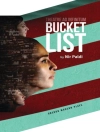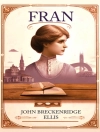In ‘New Comedies, ‘ Lady Gregory masterfully weaves together elements of Irish folklore and contemporary stagecraft to create a rich tapestry of comedic narratives. This collection showcases her exceptional ability to blend the traditional with the modern, presenting a series of engaging plays that reflect the sociocultural dynamics of early 20th-century Ireland. Gregory’s writing style is characterized by sharp wit, vibrant dialogue, and an acute awareness of the human condition, all contributing to a theatrical experience that resonates with both humor and depth. Her commitment to portraying the Irish experience in her works places this collection in a significant literary context as a response to both the colonial influences and the Gaelic revival movement of the time. Lady Gregory was not only a prominent playwright but also a pivotal figure in the Irish Literary Theatre movement alongside contemporaries such as W.B. Yeats and John Millington Synge. Her deep-rooted connections to Irish mythology and her desire to elevate Irish culture through the arts undoubtedly influenced her use of humor to explore societal issues and to celebrate the quirks of life in Ireland. For readers and theatre enthusiasts alike, ‘New Comedies’ offers a delightful exploration of Irish life, showcasing Lady Gregory’s unique voice and her ability to deftly interweave the comical with the profound. This collection is an essential addition to any literary library, inviting readers to enjoy reflections on identity, culture, and the complexities of human relationships through the lens of humor.
Mengenai Pengarang
Lady Gregory, born Isabella Augusta Persse (1852–1932), was a towering figure in Irish literary history, an emblematic playwright, folklorist, and a co-founder of the Irish Literary Theatre, which later became the Abbey Theatre, Dublin. Imbued with a passion for preserving Irish folklore, she played a significant role in the Irish Literary Revival. Her contributions to the development of Irish drama are substantial, and among her numerous works, her collection ‘New Comedies’ exemplifies her skill in crafting engaging and insightful plays rooted in Irish life. Lady Gregory’s literary style often incorporated a distinctive Hiberno-English, providing her works with authenticity and a sense of place. Alongside her dramatic works, her efforts in compiling and translating folklore brought forth seminal collections like ‘Cuchulain of Muirthemne’ and ‘Gods and Fighting Men’, which were pivotal in popularizing Irish myths and legends. Her legacy is not just in literature; Gregory was also a political activist, a supporter of Irish independence, and a social reformer. Her home at Coole Park became a hub for leading literary figures, including W.B. Yeats, with whom she had a lengthy collaboration. Lady Gregory’s contributions to the Irish cultural renaissance are chronicled in her autobiographies, reflecting a life interwoven with the arts, imbued with a deep patriotism, and adorned by an enduring commitment to the cultural enrichment of Ireland.












